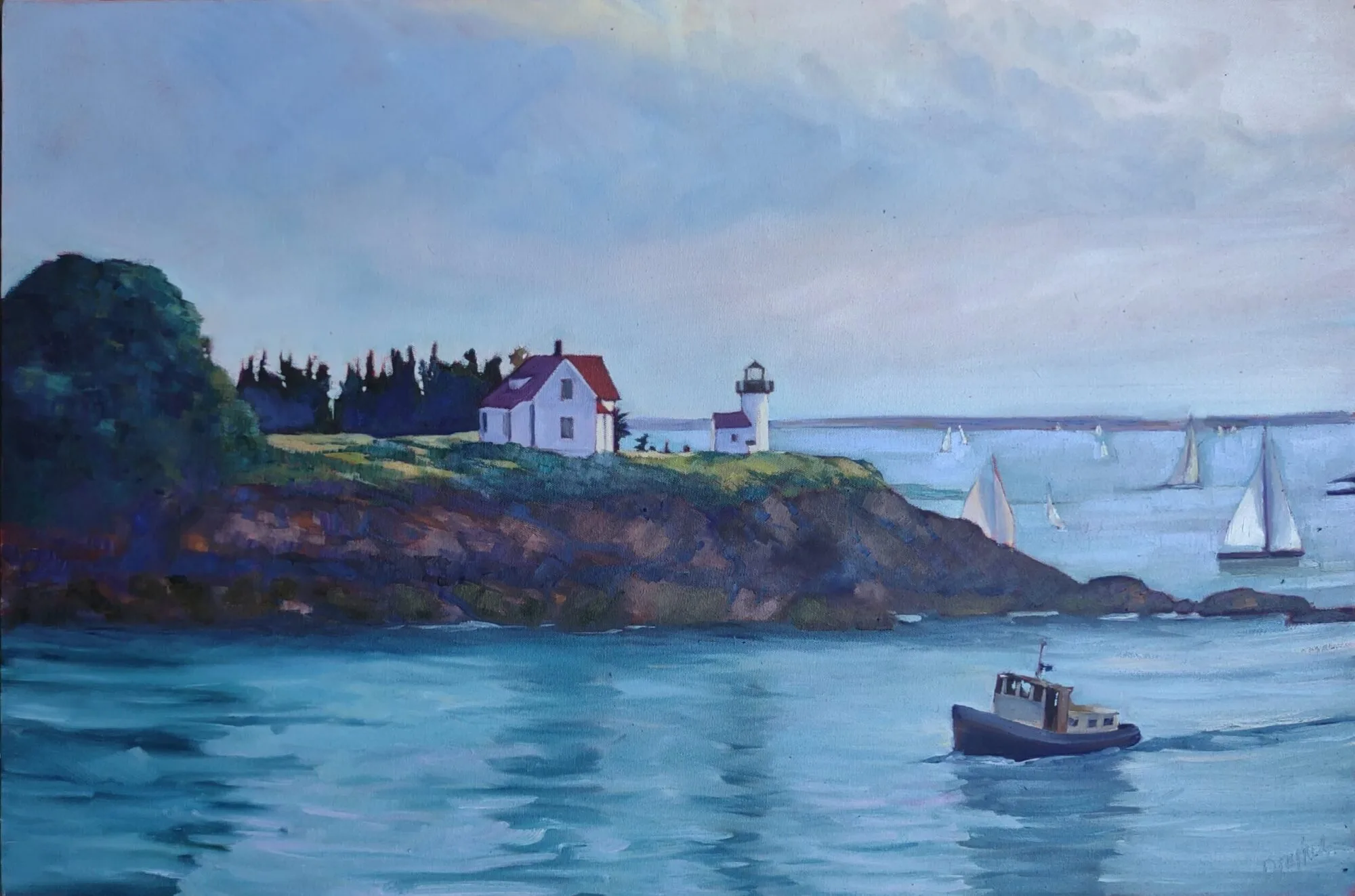The conflict between my religious and art training is pushing me into a far smarter painting.
 |
|
Christ Pantocrator, 6th century AD. The two sides of his face may represent the two natures of Christ as fully God and fully human. From Saint Catherine’s Monastery, Mount Sinai
|
English is wordy because it preserves parallel versions (synonyms) from its source languages. Sacred comes to us via the Norman Invasion, from the Old French sacrer, which in turn came from the Latin sacrare. Its root means “to sanctify,” or set apart, free from sin. Holy means the exact same thing, but it comes to us from the Saxon invaders of Britain. Its roots lie somewhere in the northern Scandinavian forests.
Very little is known about Germanic paganism, so we can only infer what was holy—the mountain Helgafell among the Norse, possibly megaliths and holy trees among the Anglo-Saxons. But the existence of words for holiness tell us that there were places, or values, that were set aside from sinful man.
 |
|
Moses Indignant at the Golden Calf, 1799-1800, William Blake
|
Household gods are a commonly recurring feature in pagan religions and folklore worldwide. They’re ancient objects of protection. They’re called teraphim in the Bible, which forbids them. In fact, the Bible repeatedly warns its followers against idolatry, most famously in the story of the golden calf.
The prohibition against idols is felt particularly strongly among Protestants. It led to a misguided wave of iconoclasm across Northern Europe and England in the 16th century that destroyed much of our pre-Enlightenment art.
Sacred art, by definition, would be art set aside for the purpose of worship. It’s very easy to see how music, dance and the decorative arts can be used in worship, but less easy to see such an application for painting or sculpture. Within Catholicism, there are vessels like monstrances, tabernacles and chalices. These receive a reflected glow of veneration, although it is the transubstantiated Christ that’s the true subject.
 |
|
Rachel sitting on the teraphim, 1726-1728, fresco, Giovanni Battista Tiepolo
|
Orthodox and Eastern Catholic churches have icons, religious symbols meant as aids to prayer. Icons are venerated, but they also served as teaching tools for the illiterate faithful. In a way they reflect the wonder of the incarnation, since they’re a tangible representation of an intangible God. As the Eastern Orthodox Council of 860 proclaimed, “all that is uttered in words written in syllables is also proclaimed in the language of colors.”
And that’s, pretty much, the limit of sacred art in the western tradition, The rest—as beautiful and transcendent as it may be—is not intended for veneration. Within Protestant Europe, religious artwork was meant primarily for purposes of edification, honor, comfort, contemplation, and inspiration. But it’s not set aside or sanctified, except that it may be part of a sanctuary or shrine.
As a dyed-in-the-wool American Evangelical, I feel those limits keenly. When I’m called to make a religious image, I tend to slip sideways. I’m working on such a painting right now, and my own religious training is rumbling with the artist in me. How does one represent the character of God without presuming to paint the face of God? How does one represent the love of Jesus without making an idol?
The conflict is invigorating, and making for a far smarter painting. I can barely wait to get to work on it again.

Hi Carol,
Since I am responsible for many of the visual components of worship in my job, I am always looking for good images which can enhance and support (but not replace)the Word. The visual arts often speak more clearly and universally than words. Many find that images of an abstract nature can capture concepts difficult to capture in words.
There is lots written about the subject. Here's a start. https://worship.calvin.edu/resources/resource-library/visual-arts-in-worship-from-either-or-to-both-and/
I'm looking forward to what you create!
How wonderful that you are struggling with this! I too often wonder how to portray my faith in symbols, but not to venerate them …only God who is above all, in which I cannot even fathom His image. It is one of GLORY beyond description. so I only hope to share a glimpse of His glory, as I see it revealed in this world He so wondrously created! Or in telling His story through what scripture lends me as truth and light on the subject of our HOLY GOD, and our Savior Jesus Christ! I will be watching with eager ness your development of your artwork in this area, and praying for a huge unveiling of God's glory in it… as I've seen some wonderful works you have made already on the themes of His transforming grace and forgiveness! <3 <3
Thank you both for your thoughtful comments.